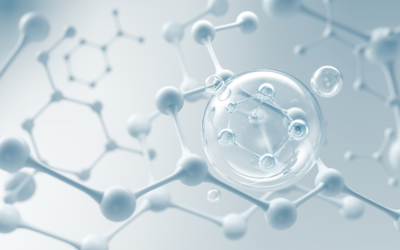
December 1 is World AIDS Day, established in 1988 with the aim of raising awareness and informing people about HIV and AIDS-related issues. Since then, medicine has made great strides, so much so that the issue today is less of a concern than it once was, especially in more developed countries.
Although this also has its positive sides, it is good to remember that there is currently no definitive cure that can completely eliminate the virus from the body and make it possible to recover from HIV infection. Therefore, screening and prevention activities, as well as activities to spread knowledge on the subject, remain very important.
HIV and AIDS: an overview
HIV is a virus that goes on to reduce the body’s defenses. Once contracted, it attacks the cells of the immune system, particularly CD4 lymphocytes, progressively weakening the body’s natural defenses.
There are three different ways of HIV transmission:
- Hematic: through transfusions or the exchange of syringes with infected blood. The first case was widespread in the 1980s, when there was less knowledge about how the virus is spread, while syringe transmission is still common among substance users today.
- Maternal-fetal: mother-to-child transmission can occur during pregnancy, during childbirth or with breastfeeding. The risk for an HIV-positive woman to transmit the infection to the fetus is about 20%, which can be reduced to below 2% by administering an antiviral drug to the mother during pregnancy and to the infant in the first six weeks of life.
- Sexual: undoubtedly the most common mode of transmission. Sexual intercourse unprotected by condoms, whether heterosexual or homosexual, can result in transmission of the virus. This occurs through contact between infected biological fluids and the genital mucous
AIDS, on the other hand, is the advanced stage of HIV infection, characterized by severe immunodeficiency. The disease moves from the stage of HIV infection to AIDS when the CD4 lymphocyte count falls below a critical threshold, becoming officially overt due to the onset of one or more indicative diseases, some of which are caused by pathogens that do not normally infect healthy people.
As mentioned earlier, there is still no cure to recover from HIV infection, but we can rely on highly effective and tolerable therapies.
Therapies and prophylaxis
The currently available therapies are the so-called antiretroviral drugs (ART, Anti-Retroviral Therapy) that allow the infection to be controlled over the long term, making the disease chronic. These are a combination of drugs that aim to suppress HIV replication, reducing the viral load to levels so low that they are no longer detectable by testing.
Studies on the subject tell us that HIV-positive people who take the therapy regularly and continuously have a long prospect of survival, similar to that of someone who is not infected with HIV. Furthermore, achieving a stably undetectable viral load has been found to make the risk of sexual transmission of HIV infection virtually nil.
In addition to treatment, prophylaxis is also playing a very important role in the fight against HIV. PEP (Post-exposure Prophylaxis) is a drug treatment consisting of taking antiretroviral drugs for 28 days and is intended to reduce the likelihood of infection after possible exposure to HIV. The earlier it is started (preferably within 4 hours of exposure), the better the chance of preventing HIV infection, although effectiveness never reaches 100%.
A separate discussion must be made, however, for PrEP, or Pre-exposure Prophylaxis. It consists of taking a combination of antiretroviral drugs by people at high risk of acquiring HIV infection in order to prevent contagion.
Numerous controlled and observational clinical trials that have demonstrated the validity of PrEP in preventing infection in high-risk sexually active individuals. Treatment efficacy is strongly correlated with adherence, facilitated by a substantial absence of relevant drug toxicity issues.
PrEP thus provides an additional tool for decreasing the risk of HIV infection. Those who choose to take it should be followed by an infectious disease specialist both at the preliminary stage, to rule out contraindications, and during the course of therapy, to monitor proper intake and any side effects.
The case of HIV/AIDS is emblematic because it highlights the great strides made by medical research against a disease that only a few years ago caused pandemics. While we can look positively on all the work done in recent years, on days like this we must remember that there is still much to be done to achieve a vaccine or a real cure for HIV/AIDS.


